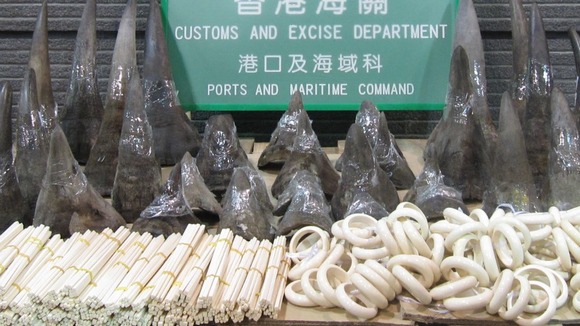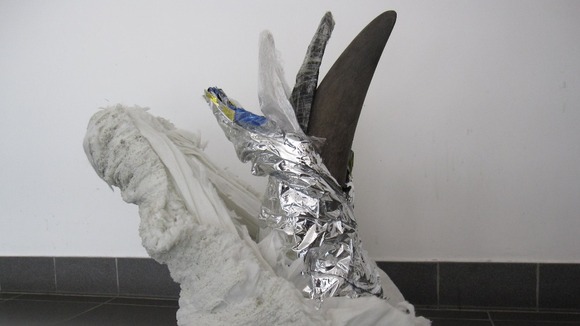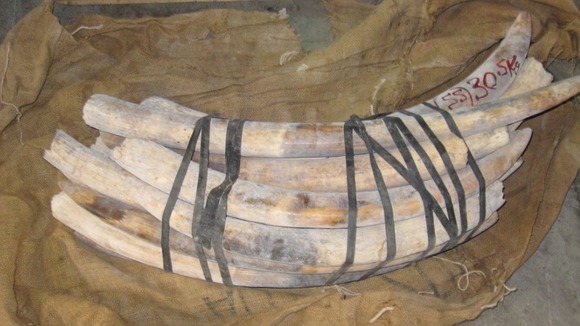- http://inmemoryofvucko.wordpress.com/2013/01/29/horror-shelter-in-hresa-part-five/
- Please sign and share the following three petitions:
- http://www.thepetitionsite.com/307/730/650/demand-investigation-into-horror-shelter-in-hresa-bosnia/ http://www.causes.com/actions/1726575-bosnian-government-protect-the-stray-dogs-instead-of-killing-them
- http://www.change.org/petitions/mayor-of-municipality-stari-grad-stop-the-slaughter-of-stray-dogs-in-sarajevo-bosnia You can help end the cruelty by sharing the truth about animals’ abuse. If you agree that animals feel, suffer, love and the truth about their abuse should be exposed, please honor our work by “like” our page. Thank you!
- http://www.facebook.com/pages/Animal-Cruelty-Exposed/363725540304160Photo : Over 50 dogs are being kept in entirely inhumane conditions, without adequate food or water or veterinary treatment, that numerous dogs are kept in tiny cages, that dead dogs are left among living dogs. Dogs have open wounds. Puppies are starving.
Wednesday, January 30, 2013
Horror Shelter in Hreša, Bosnia-Herzegovina!!!
South Korea: Don't Eat Dogs and Cats! Boycott Seoul Food and Hotel 2013 Exhibition!
PLEASE SIGN & SHARE WIDELY THE ➨ 9☚ PETITIONS INSIDE THIS LINK (A VIP LINK WITH ALL THE TOTAL PETITIONS ARE BELOW TO SEE !)
PET ►1.https://www.change.org/petitions/south-korea-don-t-eat-dogs-and-cats-boycott-seoul-food-and-hotel-2013-exhibition
PET ►2.https://www.change.org/petitions/boycott-s-korea-dogs-are-part-of-family-not-food
PET ►3.https://secure2.convio.net/ida/site/Advocacy?pagename=homepage&page=UserAction&id=2169&JServSessionIdr004=b73wrcvjv2.app245b
PET ►4.http://www.thepetitionsite.com/215/241/999/dont-legalize-dog-meat-in-korea/
PET ►5.http://www.change.org/petitions/millions-of-dogs-tortured-butchered-in-s-korea-boycott-2013-9th-international-mdpd-congress-in-seoul-s-korea
PET ►6.https://www.change.org/petitions/food-and-agricultural-organizations-of-the-united-nations-un-fao-investigate-and-sanction-s-korea-for-the-horrific-cruelty-of-dog-meat-trade
PET ►7.https://www.change.org/petitions/south-korea-stop-tormenting-and-eating-companion-animals-boycott-2014-iafs-world-meeting-in-seoul-south-korea
PET ►8.https://www.change.org/petitions/asan-s-korea-shut-down-the-illegal-hell-hole-dog-farm-and-slaughterhouse-in-tangjeong-myun-now
PET ►9.https://www.change.org/petitions/seoul-south-korea-enforce-the-ban-on-despicable-dog-meat-trade-close-down-illegal-dog-slaughterhouses-restaurants-in-gyeongdong-market
-------------------------------------------------------------------
*This is an original picture from S.G.A.O (Sirius Global Animal Organisation) from the cruel and gruesome dog meat trade in South Korea ! Rusty tin cans are jammed over their jaws to make them easier to handle for the slaughtering !
-►►-**For more on that issue go tohttp://www.petloverscompanion.com/inside-the-dog-meat-trade/
➨ ➨ PLEASE NOTE !!◄◄▬▬▬▬▬
THAT ALL THE OTHER PETITIONS AGAINST THE BARBARIC DOG MEAT TRADE IN SOUTH KOREA WITH LINKS,VIDEOS ECT.. YOU CAN SEE HERE:••••••►http://www.facebook.com/photo.php? fbid=260577087406058&set=pb.100003613067737.-2207520000.1359570105&type=3&theater
Thank you all ~ Tony Zadel Copyright(©)
Monday, January 28, 2013
Blackfish
Blackfish review, documentary, film Sundance Film Festival, examines the institutionalized cruelty of the Orca whale
By John Giansiracusa
Documentaries don’t often make people’s must lists, but once you see Blackfish it’ll definitely be on yours. The director, Gabriela Cowperthwaite, was initially drawn to making this documentary after learning of the death of SeaWorld trainer Dawn Brancheau. Her focused changed to exposing the brutality of capturing these highly intelligent, social animals, and the effectsvi z vi that follow due to a life in captivity.
It is proven that these animals have a part of their brain that humans do not have. Witnessing the initial capture back in the 70’s of these Orcas was truly gut wrenching. SeaWorld sent people to Puget Sound, WA to trap the Orcas, specifically the babies. When they succeeded the remaining family of about 20 Orcas lingered close by, bobbing up and out of the water screeching for the babies that were taken. The remaining Orca family was left mourning their baby they had been kidnapped.
As the story progresses we learn that SeaWorld actually consciously misinforms the public on its tours. Old visitor footage shows SeaWorld guides explaining that Orcas live longer in captivity thanks to the nutrients provided by the SeaWorld family. In actuality, they die around age 30 in captivity but females can live up to 100 in the wild. Tilikum was one of the main stars of the film, the largest male Orca in captivity. He had been transferred to Orlando after killing a trainer in Sealand Park in Canada.
Being a massive male, SeaWorld purchased this animal to create offspring. Unfortunately Tilikum was too large for his new home and often became the subject of abuse from smaller younger female Orcas. These Orcas are similar to humans in that there are many different “nationalities” of Orcas. Just as different ethnicities of humans would not get along in a cage together, all Orcas are not going to cohabitate peacefully.
Another heart wrenching example of the cruelty of imprisoned Orcas was the story of a mother and baby whale. Due to an uncooperative calf, SeaWorld decided to split up mother and baby and send the 4-year-old calf to a different SeaWorld. The moment that child whale left the tank the mother huddled in a corner echo locating for hours in pitches the trainers never heard before. How can you dispute the level of intelligence and social interaction these animals have?
Trainers were given very little background information about the killings in other parks. Anytime they questioned something they were made to feel foolish for asking. Also it was implied that if you did not agree then someone else was waiting for their job; aka shut up or you’re fired. Often the trainers had instincts about foul play but cared so much for the whales they didn’t want to leave their jobs.
The information is both astounding and horrifying and after this viewing I personally will no longer support this park. The filmmaker was not trying to create a protest against SeaWorld. They generate $2 billion dollars a year and to shut them down is impossible.
Instead she stated during the Q&A that she would like to see SeaWorld use its facilities to rehabilitate animals in need and then release them back into the wild. There are coves in the ocean that can be blocked off so these animals can seem like they are in the wild but still in a controlled environment. Through her research she realized there was so much more to the story than just a whale killing a trainer.
She wanted to make you aware of what truly happens with these whales and for you to make your own decision. Trainers are no longer to be in the pool with these whales, a decision that was made by OSHA (Occupational Safety and Health Administration). SeaWorld is trying to appeal that.
Keep in mind that anytime you attend one of these killer whale shows you are risking the possibility of witnessing a death in front of your eyes as well as supporting the institutionalized cruelty of beautiful and intelligent animals.
A very special thanks to the local NYC Kosher Comedy Community site, BangItOut.com, for teaming up with NoBo to spread the stories and reviews by correspondents Yael Galena and John Giansiracusa at this year’s Sundance Film Festival in Park City, Utah.
Visit the BangItOut.com Goes to Sundance page.
Visit the NoBo Goes to Sundance page.
Visit the Sundance Film Festival page.

The dirty business of the lucrative ivory trade from Africa to Asia



Help Tania
Tania, a lone elephant, with only concrete to kill her, submissively kneels in submission at a Romanian zoo.
To help Tania send this photo/link of her to:
EAZA asking to transfer her. info@eaza.net
Ask why the EAZA has allowed this to happen.
Email your Romanian Ambassador to allow transfer:
http://embassy.goabroad.com/
Click See More for more ways to help Tania ...
MEDIA
Please email this photo url/link to the
The Independent Times newseditor@independent.co.uk
Their Fb page is here:
www.facebook.com/
and to The Daily Mail
news@dailymail.co.uk
Or fill out the Daily Mail form here
http://www.dailymail.co.uk/
Our Photo link to copy & paste to send to media:
https://www.facebook.com/
The photo and all it Shares and Comments will show the News Room there is great interest in this elephant.
The petition for Tania:
http://
Email the European Commission.
SG-PLAINTES@ec.europa.eu
Attention: Ion Codescu, Head of Enforcement.
To File a Complaint with the European Commission go to this link
http://ec.europa.eu/eu_law/
Tania was reported not to get along with the other elephants she had lived with. They were trained to do tricks in La Cornelle Zoo, Italy. She is at the Zoo Targu-Mures whose director thinks she is just fine. We need to tell other authorities and most importantly the media otherwise. What is curious about the photo is why she is allowed to be so close to this keeper, unless he intends to use his shovel if she goes after him. By forcing her into this position and the lack of foot care, the zoo does not know how to take care of her. Tania has had anger issues in the past, and who could blame her, and is one reason she was transferred to Romania and is alone is the concrete prison. All of this is completely unacceptable
Exposed: Imprisoned Bear Abused, Eaten
Wednesday, January 23, 2013
Support the Great Ape Protection Act
Tuesday, January 22, 2013
Guys want tiger to pose for pictures by smacking his head
Monday, January 21, 2013
Thursday, January 17, 2013
Macau Greyhounds In Deadly Race please sign this petition
Macau Greyhounds In Deadly Race
(ANIMAL WELFARE) Animals Australia is calling for the ban of the greyhound export trade to Macau, concerned that major animal abuse is occurring. Macau Greyhound statistics are extremely morbid. The dogs used for racing are kept in awful conditions, and according to the head of Macau’s animal control department, every imported dog from Australia is dead within three years. Dogs that finish the race outside of the top three spots are often killed. Read on for more on the sad lives of these greyhounds, and help end this cruelty by signing the petition below. — Global Animal


Thursday, January 10, 2013
Elephant Mass Shooting In Kenya
January 10, 2013 Alisa Manzelli

Monday, January 7, 2013
Bears Trapped in Pits, Forced to Beg For Food ...
- Workers sometimes leave the bears, who have a remarkably well-developed sense of smell, trapped amid their own waste all day long. Instead of removing feces, they spray a citrus-scented product into the pits. One worker told PETA's investigator, "You just got to be careful because [federal officials] think you're trying to hide something. Which we are."
- CSBP's manager and bear handler admitted that workers deny bears food because, "[i]f you feed them … they ain't gonna eat for people."
- The manager boasted that he sprays water at one bear "all the time … to get his ass up" and force him onto display.
- The park's bear handler said it took "20 shots … in the head" to kill one of CSBP's bears. He said that there is "[n]othing better than a bear that's been eating bread and apples all its life. Meat's good."
Friday, January 4, 2013
Hong Kong seizes huge haul of smuggled ivory
HONG KONG -- Hong Kong said Friday it had seized more than a ton of ivory worth about US$1.4 million in a shipment from Kenya, the city's third big seizure in less than three months.
 “It is not very often that you see architectural stones from Kenya ... (that's why) we saw this container as possibly storing high risk goods,” customs official Clare Kwan told reporters. The department declined to say where the shipment, which passed through Malaysia, was headed for. No arrests have been made so far. The latest haul comes less than three months after Hong Kong made its record seizure in October of 1,290 pieces of tusk and a small number of ivory ornaments from Kenya and Tanzania that weighed a total of 3.81 tons. In November, customs officers intercepted another container from Tanzania carrying 569 pieces of unpolished tusks weighing about 1.3 tons.
“It is not very often that you see architectural stones from Kenya ... (that's why) we saw this container as possibly storing high risk goods,” customs official Clare Kwan told reporters. The department declined to say where the shipment, which passed through Malaysia, was headed for. No arrests have been made so far. The latest haul comes less than three months after Hong Kong made its record seizure in October of 1,290 pieces of tusk and a small number of ivory ornaments from Kenya and Tanzania that weighed a total of 3.81 tons. In November, customs officers intercepted another container from Tanzania carrying 569 pieces of unpolished tusks weighing about 1.3 tons.
 |
An Elephant Fetus Born and left to die after her mother had her face chopped off so the Chinese can make Ivory Chopsticks. Elephants are pregnant for 2 years and are excellent mothers she still has her umbilical cord attached
|









